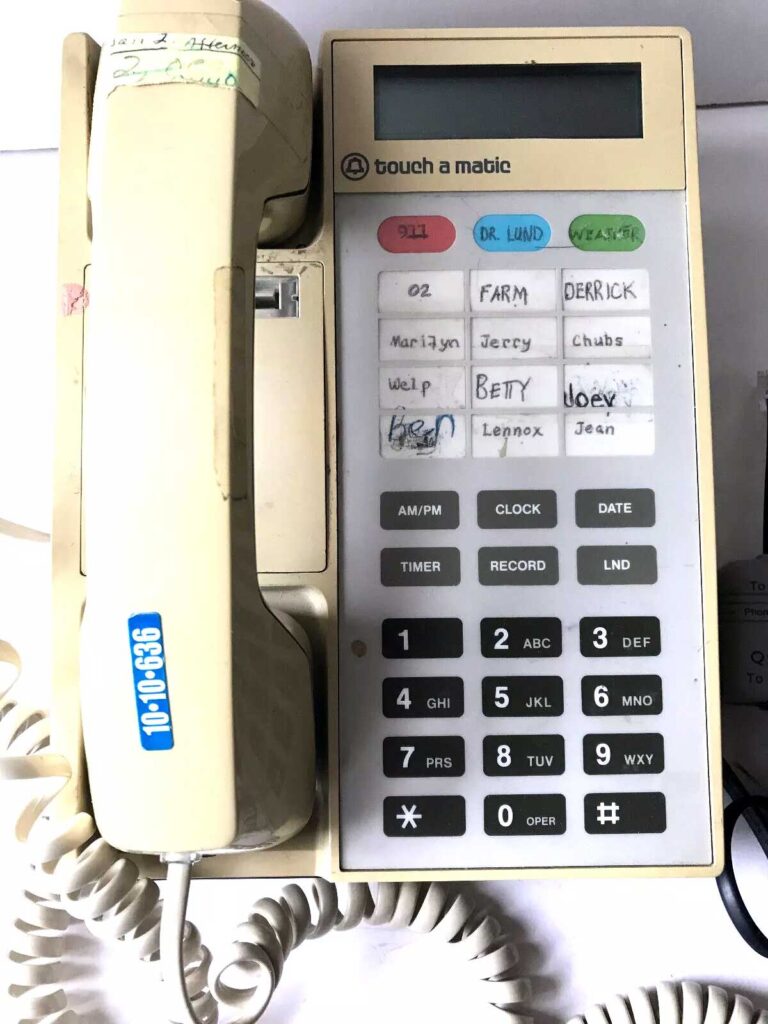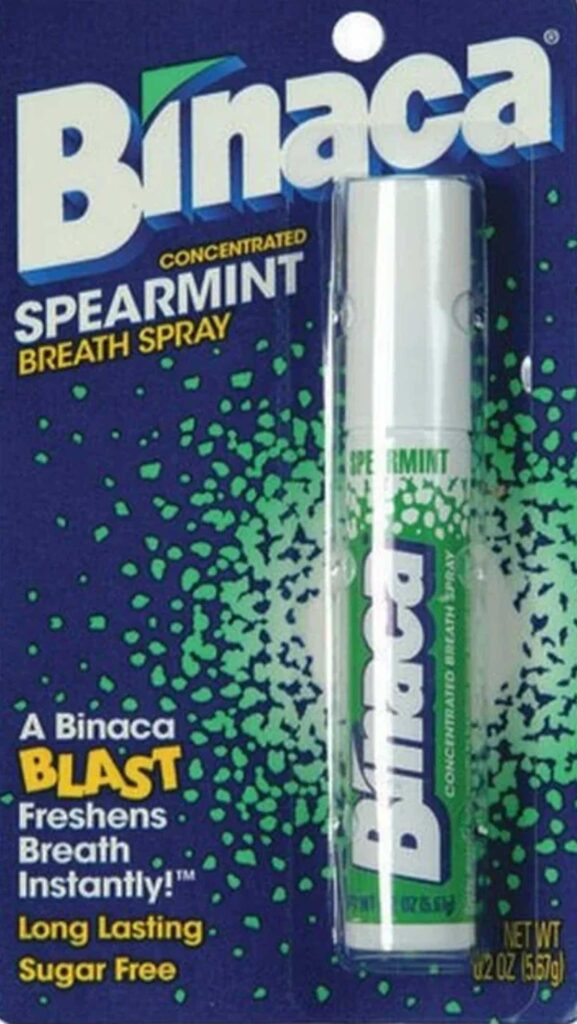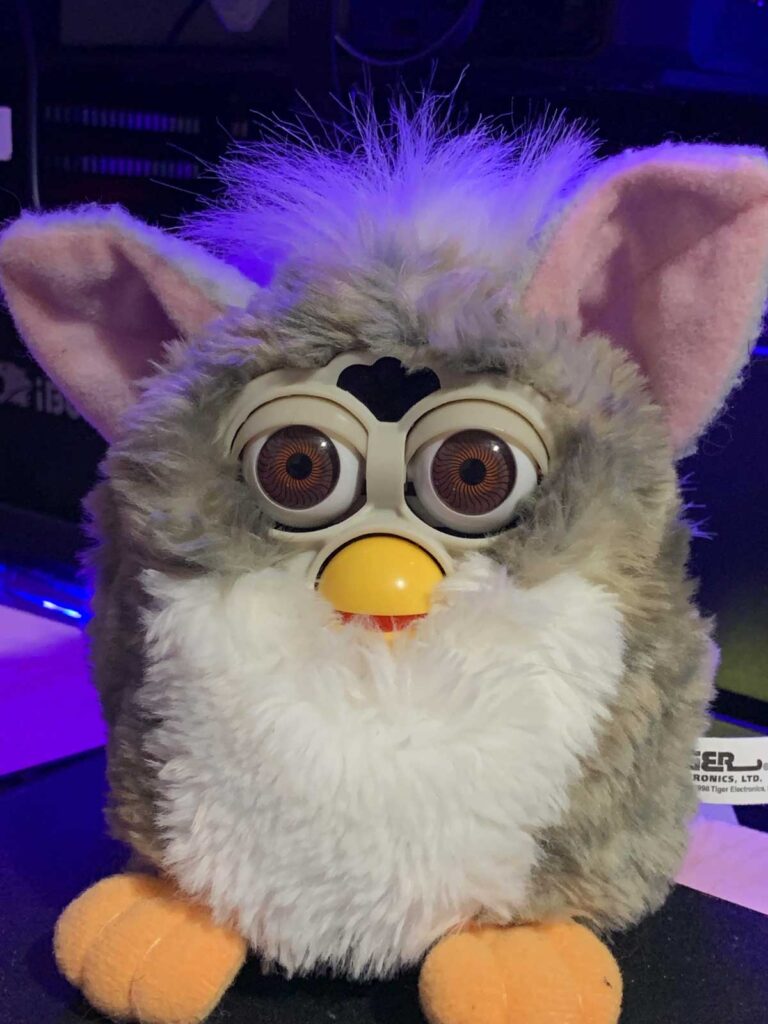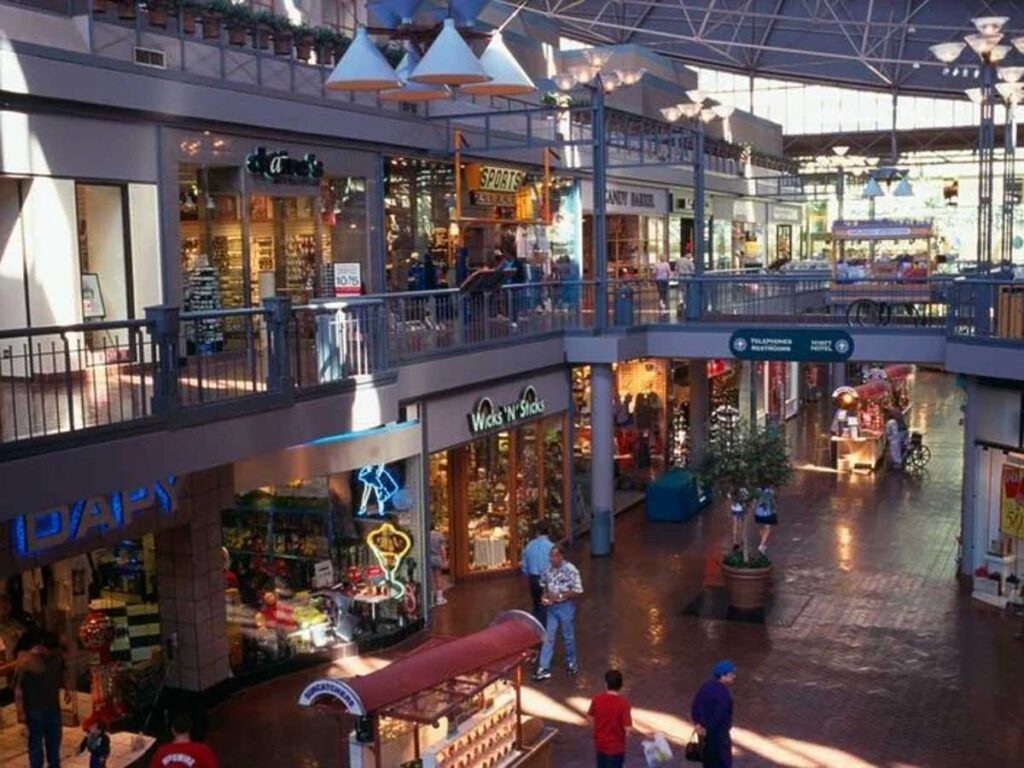There’s a cliche that goes “At some point in your childhood, you and your friends went outside to play together for the last time, and nobody knew it.”
Obviously it’s painfully true and overly sentimental, but it’s incredible effective at getting to the heart of the brand of nostalgia where you suffer from a sense of having taken something for granted. In a sense, anything that felt normal was taken for granted, but some things more than others, probably because we truly believe that those things would never go away, so they’d never have to be missed.
This collection of popular 90s things that are practically non-existent will undoubtedly be updated as we cover and remember more things from the 90s. Still, we think it’s a solid start to feeling some pangs of loss for an era that will surely never return.
1. Video Rental Stores

There was nothing quite like going to the video store. It was fun, bright, and filled with hundreds or thousands of movies that you had never heard of, let alone seen. A perfect Friday night in the 90s as a kid was picking up a pizza, grabbing a 2-liter of soda, and a couple of movies from the nearest Blockbuster or Hollywood.
2. See-Through Electronics

Here’s my assumption on see-through electronics: For a very long time, most consumer electronics, because of their function and price, were designed for adults. Adults were likely so impressed by the innovation or novelty of the product that it alone was enough to satisfy them.
But as more and more electronics were designed with kids in mind, the packaging itself became a selling point. Who wouldn’t want a see-through pager rather than a solid black plastic one like the adults have? And the transparency of the packaging made the gadget’s guts feel more futuristic and imbued with some sort of technological magic. For many of us, it was the first time we saw a circuit board, aside from when we broke the TV remote.
3. Payphones

It’s hard to really convey how different communicating over the phone was in the 90s. Whether it was a landline at home or these bizarre public devices, it was the only way (outside of a pager, or the extremely rare cell phone) to communicate with friends on the go. But keep in mind, the only way you’d be able to make it work is if you remembered the phone number you were trying to dial.
4. Pogs

Pogs were a defining playground obsession of the 90s. One day they were nowhere, and the next, they were everywhere. These small, colorful discs—originally Hawaiian milk bottle caps—became prized possessions for kids across the country. Featuring popular cartoon and pop culture designs, Pogs quickly evolved from simple caps to collectible treasures.
The game was simple but addictive. Players stacked Pogs, then slammed them with a “slammer” — a heavier disc made of metal or plastic. Any Pogs that flipped face-up were claimed by the player. It was gambling, albeit low-stakes gambling, but the thrill of winning a friend’s rare Pog made it feel monumental.
For a brief but unforgettable time, Pogs ruled recess. Kids played before school, at lunch, and during any free moment. But just as quickly as they appeared, they vanished. While their reign was short, Pogs remain a beloved symbol of 90s nostalgia. Relive the magic and learn more in our full article on Pogs.
5. Saturday Morning Cartoons

Before the days of YouTube, streaming services, or even easily accessible internet, watching cartoons was a far more limited experience. Sure, you could rent a VHS from the local video store, but for most kids, the holy grail of cartoon time was Saturday morning. For a few golden hours each week, networks dedicated entire programming blocks to animated shows, giving kids their much-needed cartoon fix.
Saturday mornings weren’t just about cartoons — they were also a showcase for iconic toy and cereal commercials that many of us still remember fondly. From action figures to sugary cereals, it’s where a lot of 90s childhood wish lists were born.
While the nostalgia for Saturday morning cartoons is undeniable, it’s one aspect of childhood that’s arguably improved with time. Today’s kids have cartoons on demand 24/7, but for those of us who lived through the era, there’s something special about that fleeting window of weekend magic that no streaming service can quite replicate.
6. AOL Dial-Up

In the early 90s, AOL was the #1 way that people accessed the internet. It was absolutely everywhere. It was dial-up internet, which means that you plugged a telephone cable (usually reserved for a phone) into your massive desktop computer, fired up your AOL application, and told it to call into the servers to get access. The image above is the screen you would watch to see if you successfully got on, or to wait for it to fail so you would have to try again. And don’t forget, if someone picked up the phone while you were on the internet, it would kick you off and you’d have to go through the entire thing all over again.
Again, we miss it for the loss of the experience of it, but it was a pretty awful experience.
Related: 11 AOL Homescreens From the ’90s Through the Early ’00s
7. Pagers

For those who never experienced a pager, it was essentially a cellphone that could only do one thing: receive text messages, and often only in the form of numbers. So if you wanted your friend to call you, you would either put your phone number in for them to call you, or you might have a code with them, in which case you’d type in your code and “911” for them to call you urgently.
Primarily this was used by “important adults” like doctors, lawyers, stock brokers… you know, people who wore suits or cut people open, but as the technology became cheaper and more technology was being marketed to kids, it found it’s way briefly into popular culture.
8. Miss Cleo

Miss Cleo, whose real name was Youree Dell Harris, became famous in the late 1990s as the spokesperson for the Psychic Readers Network. Known for her colorful personality and memorable catchphrases delivered in a Jamaican accent, she promoted a pay-per-call service where people could consult “psychics” for life advice. However, controversy erupted when it was revealed that Miss Cleo was born in Los Angeles, not Jamaica, and the Psychic Readers Network was accused of deceptive practices.
Customers claimed they were charged exorbitant fees for services and were misled about the “free” readings. The Federal Trade Commission (FTC) eventually intervened, filing complaints against the company for misleading advertising and fraud. The Psychic Readers Network ultimately forgave $500 million in unpaid customer bills as part of a settlement. Miss Cleo herself avoided charges, and she continued to embrace her psychic persona until her passing in 2016, remaining an iconic, if controversial, figure in late-90s pop culture.
9. Speed Dial

The speed dial function on old landline phones was an innovation that made calling regular contacts far more convenient in the pre-smartphone era. Introduced in the 1980s, speed dial allowed users to store frequently dialed numbers in the phone’s memory, assigning each one a unique button or a two-digit code. Instead of dialing each digit, users could simply press one or two buttons to instantly connect with family, friends, or essential services.
This feature became especially popular for busy households, professionals, and older adults who relied on quick access to emergency contacts. Speed dial represented a significant advancement in landline convenience, offering a taste of the contact lists we take for granted today on mobile devices. It stayed relevant until cordless phones, and eventually cell phones, took over the market, making speed dial on landlines more of a nostalgic reminder of the early days of telecom innovation.
10. Binaca

Binaca was a popular breath freshener brand that gained widespread popularity in the 1960s and 70s, but for some reason became really popular with kids in the 90s. Known for its distinctive spray bottle, Binaca offered a quick and convenient way to freshen breath, fitting neatly into a pocket or purse. The spray was marketed as a go-to for people on dates, professionals in need of a quick refresh, and anyone concerned about fresh breath on the go.
Marketed with slogans promising instant freshness, Binaca sprays were easy to use, delivering a strong burst of minty flavor. It even developed a bit of a “cool” reputation, becoming a minor cultural touchstone that represented modern, on-the-go convenience before mints and gums became the norm. It was even featured in a popular scene in Ace Ventura Pet Detective.
11. Furbies

Furbies were a wildly popular electronic toy introduced by Tiger Electronics in 1998, quickly becoming a holiday must-have and a staple of late-90s childhood. These owl-like, animatronic creatures were designed to “learn” language, starting out with their own unique “Furbish” language and gradually “learning” English the more they interacted with their owners. Equipped with blinking eyes, moving ears, and a voice that giggled, cooed, and spoke, Furbies created an illusion of lifelike interaction that fascinated kids and mystified adults.
Their lifelike interactions and tendency to speak or move unexpectedly made Furbies a subject of both intrigue and, occasionally, fear. Rumors spread about their supposed ability to “spy” on households, causing some parents to be wary. Despite these rumors, or perhaps because of them, Furbies continued to fly off the shelves, with several redesigns and versions introduced over the years. Today, they’re remembered as an iconic toy of the 90s and early 2000s, capturing the era’s fascination with technology and hinting at the early days of interactive electronic pets.
12. Calling Cards

Calling cards were a hugely popular way to make long-distance and international calls in the 1990s, especially as mobile phones and affordable cell plans were still in their infancy. These prepaid cards allowed users to load a set amount of minutes or credit, which they could then use by dialing a toll-free number and entering a unique PIN. They offered a way to avoid hefty long-distance fees on landlines, making it much cheaper and easier to stay connected with loved ones across distances.
13. MTV

MTV in the 90s was more than just a music channel; it was a cultural powerhouse that defined a generation. As music videos became the centerpiece of its programming, MTV became the go-to source for discovering new artists, following trends, and connecting with a global music scene. It was the era of grunge, hip-hop, and pop, with MTV amplifying iconic artists like Nirvana, Tupac, Madonna, and Britney Spears. Music videos became works of art, shaping fashion, slang, and attitudes, while MTV’s influence turned musicians into cultural icons.
Beyond music, MTV shaped 90s youth culture through groundbreaking shows like The Real World, one of the first reality TV shows, and Beavis and Butt-Head, which provided edgy, irreverent humor. These programs, alongside MTV News and TRL (Total Request Live), made MTV a tastemaker and voice for young people. Topics like activism, identity, and social issues found a platform in a way that resonated with a youthful audience.
14. Viennetta

Viennetta was a luxurious, layered ice cream dessert sold in the late 80s and 90s. But here’s what you need to know about it: Viennetta had the most over-the-top opulent commercials that tried to convince lower and middle class families that this is what the rich were eating, and for a price, you can too.
It as a dessert was nothing special, but for most kids watching TV, it symbolized an out-of-reach lifestyle sitting right there in the frozen dessert aisle at the same grocery store where your family keeps buying bologna and off-brand cereals.
15. Zima

Zima was a clear, citrus-flavored alcoholic drink introduced by Coors Brewing Company in 1993, making a splash in the 90s as one of the first “malternative” beverages aimed at younger adults looking for something different from beer. With its transparent look, Zima’s marketing leaned into its unconventional, almost futuristic appeal, promising a lighter, crisper alternative that was neither a wine cooler nor a beer. Advertised with a catchy “refreshment” theme, it became an instant party staple, especially for those who were looking to avoid the heavy taste of beer.
While Zima enjoyed early popularity, it was also the subject of jokes for its unique taste and clear appearance, which didn’t fit easily into the classic beer or cocktail categories. Over time, this niche appeal led to declining sales, and Coors discontinued Zima in the U.S. in 2008. However, it left a lasting impression as a quintessentially 90s drink, fondly remembered by fans and reappearing in limited re-releases that capitalized on nostalgia.
16. CD Walkmen

The CD Walkman, introduced by Sony in the early 90s, transformed music listening, offering portable access to high-quality digital audio for the first time. Following the cassette-based Walkman, the CD version brought the excitement of CDs—better sound, easier track skipping, and album artwork—out of the home and into the hands of music lovers on the go. This sleek, portable CD player became a 90s icon, especially as music genres like grunge, hip-hop, and alternative rock rose to prominence, with fans eager to take their favorite albums with them.
The CD Walkman became a must-have gadget, though it came with quirks that defined the experience: users had to be careful with sudden movements, as the players often skipped on bumpy rides until anti-skip technology was developed later in the decade. It was especially popular among teens and young adults, who used it as a personal escape or a way to add music to their everyday routines. CD Walkmen became less popular with the rise of MP3 players and digital downloads, but they hold a special place in 90s nostalgia—a reminder of the era when listening to an album from start to finish was a cherished ritual.
17. Camcorders

Camcorders in the 90s were a staple of family events, vacations, and everyday moments, capturing life in a way that felt new and exciting. Popular brands like Sony, JVC, and Panasonic offered models that used VHS or Hi8 tapes, making it easy to watch recordings directly on a VCR. The camcorder’s iconic shoulder-mounted design or compact, handheld form turned users into instant videographers, sparking a trend of recording everything from school plays to family road trips.
They also brought an experimental spirit to personal filming, leading to everything from homemade music videos to early attempts at skate videos, prank tapes, and budding filmmaking. Today, the grainy footage from old camcorders is deeply nostalgic, evoking the era’s family-centric culture and a certain unpolished charm.
18. Shopping Malls

Shopping malls in the 90s were way more than just retail centers—they were social and cultural hubs where people went to hang out, meet friends, go to the movies, eat food, play games at the arcade, and sometimes just do nothing at all. They were packed with stores like Spencer’s Gifts, The Gap, Sam Goody, and Claire’s. They were a place to be seen, a place to eat, a place to get away from your parents. Most of the time you didn’t have a reason to go to the mall, because you’d figure that out once you got there.
19. Skip-It

The Skip-It toy was a wildly popular playground staple in the 90s, capturing kids’ attention with its simple yet addictive design. Created by Tiger Electronics, Skip-It featured a plastic ball connected to a hoop that users would loop around one ankle. The goal was to “skip” over the swinging ball with the other foot, counting how many successful skips you could achieve. Later versions even added a counter to track each rotation, turning it into a competitive game among friends.
Skip-It combined physical activity with fun, and it became a favorite for recess, backyards, and driveways. The toy encouraged kids to challenge themselves, competing for the highest score or just enjoying the rhythm of skipping. Skip-It ads played frequently on TV, enticing kids with catchy jingles and promises of endless fun. While it eventually faded in popularity as new toys came onto the scene, Skip-It remains a nostalgic symbol of 90s childhood, reminding many of carefree days spent outside, challenging friends to see who could skip the most without tripping.
20. Lisa Frank Binders

Lisa Frank binders were an iconic part of 90s school culture, known for their bright, colorful designs featuring whimsical animals, rainbows, and cosmic backgrounds. With eye-catching characters like neon-colored unicorns, dolphins, leopards, and dancing bears, Lisa Frank binders transformed ordinary school supplies into expressive, personal accessories. The bold, vibrant artwork stood out in any classroom and instantly became a must-have for kids who wanted to showcase their love for all things colorful and magical.
Owning a Lisa Frank binder was almost like a status symbol at school, and for many, it was a way to bring some joy and creativity into the daily grind of homework and classes. The brand expanded into folders, stickers, and notebooks, becoming a full line of stationery that embraced a unique, unapologetically bold aesthetic that celebrated imagination and individuality. Today, Lisa Frank binders evoke a sense of nostalgia for anyone who grew up in the 90s, capturing the era’s love for color, creativity, and a little touch of fantasy.
21. Hackey Sack

Hacky sacks were a quintessential part of 90s youth culture, turning parks, schoolyards, and college campuses into impromptu “hack circles” where groups of friends would try to keep the small, bean-filled footbag in the air as long as possible. Originally popularized as an alternative sport in the 80s, hacky sacks gained a renewed popularity in the 90s, especially among skaters, musicians, and teens who appreciated the relaxed, skill-based vibe of the game.
The game was simple yet challenging: using only their feet, players would attempt to pass the hacky sack around in a circle without letting it hit the ground. It became a casual, collaborative pastime that encouraged creativity and friendly competition. Hacky sacks had a “chill” and laid-back reputation, embodying a countercultural spirit that resonated with the grunge and alternative movements of the time. Today, hacky sacks are a nostalgic reminder of a pre-digital pastime when fun often meant stepping outside, meeting friends, and practicing tricks under the sun.
22. Boomboxes

Boomboxes were an unmistakable symbol of 90s music culture, embodying the era’s love for bold, portable sound. Known for their large, rectangular shape with big speakers and a handle on top, boomboxes were designed to be carried anywhere, from street corners to skate parks to backyard barbecues, turning any spot into a party. With cassette decks (and later, CD players), boomboxes allowed people to listen to their favorite albums, make mixtapes, and even record songs off the radio, giving users a way to curate their music experience on the go.
Boomboxes became iconic in hip-hop and urban culture, often seen as an essential accessory for breakdancers and street performers. People would bring them to showcase their favorite tracks, share the latest hits, or create the perfect soundtrack for a gathering. The louder, the better—it was about making a statement, and boomboxes let people express their musical tastes loudly and proudly. Though smaller devices have since taken over, the boombox remains a nostalgic emblem of a time when music was as much about the shared experience as it was about the sound.
23. Delia’s Catalogs

The Delia’s catalog was a 90s fashion staple, capturing the essence of teen style and making it accessible to a generation growing up before online shopping. Known for its distinctive, bold designs, Delia’s offered a mix of edgy, fun, and often quirky clothing—everything from platform sneakers and butterfly clips to printed tees and cargo pants. Each catalog was like a mini magazine, filled with colorful spreads and trend-forward styles that appealed directly to young girls who wanted to express themselves with a bit of attitude.
Delia’s catalogs weren’t just about clothes; they were a cultural phenomenon that inspired and connected teens. Flipping through the pages became a social activity, with friends circling items, planning outfits, and dreaming of the looks they’d rock at school or on the weekend. Delia’s represented the ultimate in 90s mall culture with a catalog that provided easy access to the latest trends for those who couldn’t make it to the stores. Today, Delia’s is remembered as an iconic piece of 90s fashion nostalgia, representing the era’s playful and expressive style that lives on in retro fashion today.
24. Slap Bracelets

Slap bracelets were a 90s playground sensation, combining simple design with irresistible fun. Made from flexible, springy metal covered in colorful fabric or plastic, these bracelets would instantly curl and “slap” onto your wrist when you tapped them against it. Kids were drawn to the snap-on action, and with designs ranging from neon colors and animal prints to sparkles and glow-in-the-dark patterns, slap bracelets quickly became a way to make a bold, playful fashion statement.
Though slap bracelets became a must-have accessory for kids and teens, they also stirred up controversy when reports emerged that some cheaply made versions could wear through the fabric, exposing sharp edges. Many schools eventually banned slap bracelets due to safety concerns, which only seemed to add to their mystique. Today, they remain a nostalgic emblem of 90s style, capturing the era’s love for vibrant accessories and the joy of simple, interactive fads.
25. Arcades

Arcades in the 90s were magical, neon-lit gathering places where people of all ages could dive into immersive gaming experiences that weren’t yet possible at home. Filled with rows of buzzing cabinets and flashing screens, arcades offered everything from classic games like Pac-Man and Space Invaders to the newer, cutting-edge titles of the time, like Street Fighter II, Mortal Kombat, and Dance Dance Revolution. These spaces became social hubs, where friends would gather, gamers would compete for high scores, and newcomers could marvel at the sounds and sights of this vibrant gaming world.
In the 90s, arcades became synonymous with youth culture, embracing the rise of competitive play and multiplayer gaming. Whether it was lining up to challenge a stranger to a fighting game or racing through levels with friends in a co-op game, arcades offered experiences that fostered camaraderie and friendly rivalries. For many, the local arcade was a weekend ritual, a place to hang out and escape into a world of pixels, joysticks, and pumping soundtracks.
As home consoles became more advanced, arcades gradually faded, but they remain a cherished symbol of 90s pop culture—a time when gaming meant venturing out, gathering coins, and sharing the thrill of discovery with others.
As mentioned at the beginning of this article, we’ll be adding more and more to this list and use it as a sort of hub for all the things that were huge in the 90s but have completely or nearly disappeared from modern life.

